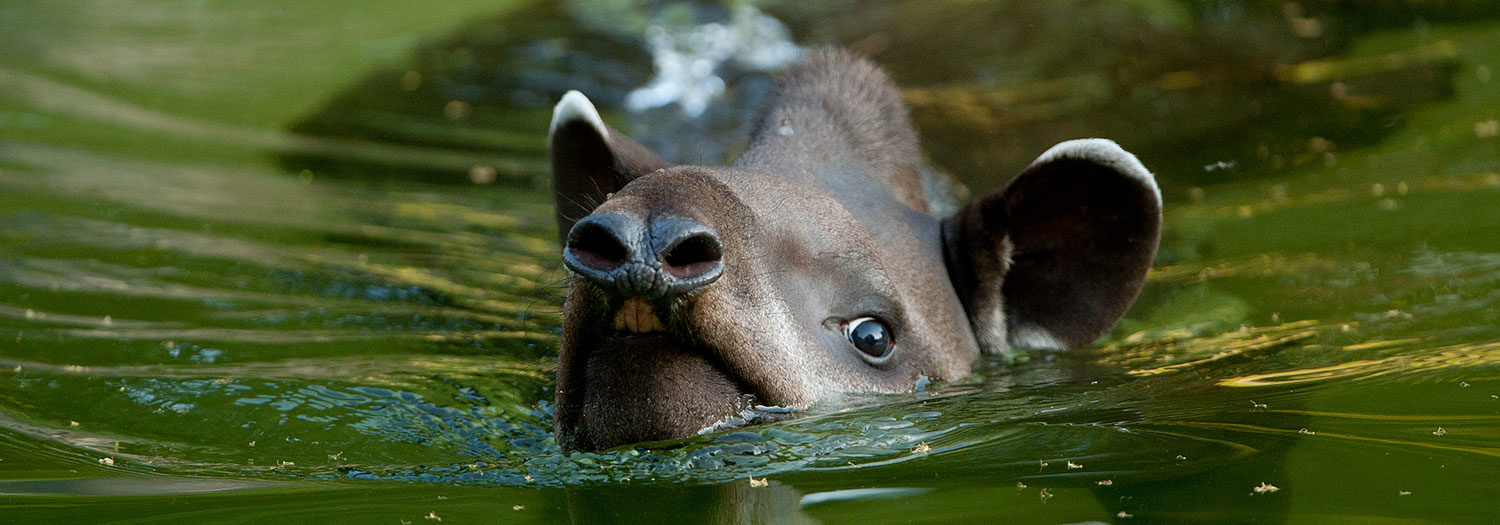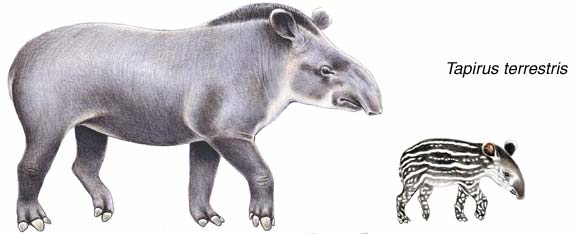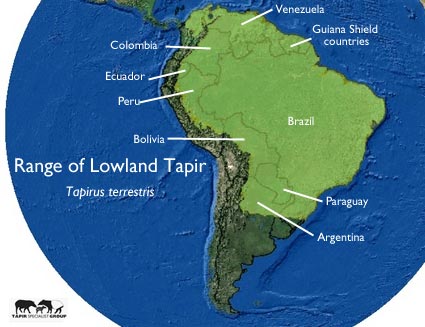Lowland Tapir
Tapirus terrestris
Status: Vulnerable

Also Known As
South American tapir, Brazilian tapir, danta (Spanish), anta (Brazil), maypouri (Quichua), danta de tierras bajas o amazónica (Spanish), sachavaca, huagra (Perú); gran bestia (Colombia, Ecuador).
Characteristics
The Lowland tapir can be identified by its large stiff mane or crest from forehead to shoulder, which the other three species of tapirs do not have. They are also known for being strong swimmers, with the ability to cross rivers and take to the water to escape predators.
Lowland tapirs can grow to 6 feet long (1.8 meters) and 550 pounds (225 kg), the size of a small pony, and when running resemble the galloping of a horse. They have large teeth, perfect for grinding up plants and seeds, and their long prehensile snout is used to reach for leaves and fruits.
Lowland tapirs are primarily solitary and shy, grazing and foraging at night and resting or hiding during the day. They eat fruits and other vegetation.

Illustration generously provided by Stephen Nash, Conservation International
Lowland Tapir Range Map

Map by Carlos Pedraza, TSG, 2008
Habitat and Range
The Lowland tapir is found throughout a wide geographic range, from North-Central Colombia and east of the Andes and including most of tropical South America. They occur mostly in tropical lowland rainforest and wetlands, but they can also be found in seasonally dry habitats such as the Chaco of Bolivia and Paraguay.
Threats to Their Survival
The major threats to the species are habitat loss due to deforestation, hunting for meat and competition with domestic livestock.
Population Estimate (2008): There is not enough research information available to estimate population. We do know that due to habitat loss population numbers are in decline, though numerous strongholds exist. The lowland tapir, although generally rare and elusive, can be locally common, such as around water sources.
Sources:
BROOKS, D.; BODMER, R.E.; MATOLA, S (compilers). 1997. Tapirs – Status Survey and Conservation Action Plan. (English, Spanish, Portuguese.) IUCN/SSC Tapir Specialist Group. IUCN, Gland, Switzerland and Cambridge,UK.viii+164pp. Dirección en la Red. http://www.tapirback.com/tapirgal/iucn-ssc/tsg/action97/cover.htm
EMMONS, L. 1990. Neotropical Rainforest Mammals. The University of Chicago Press. EEUU. 281p
Illustration generously provided by Stephen Nash, Conservation International
